Looking Up, 16-page English PDF Edition, Back Issues and Current Issue
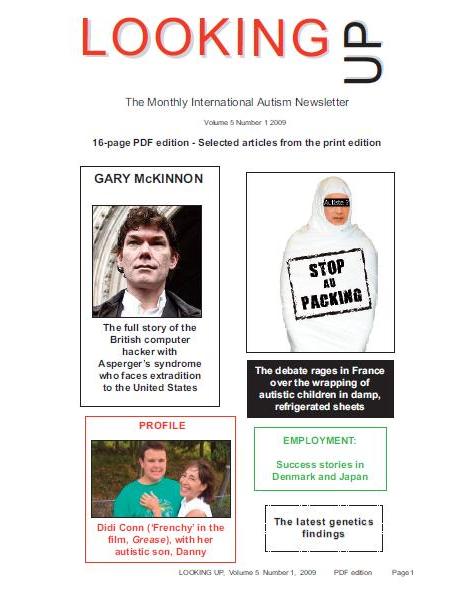
|
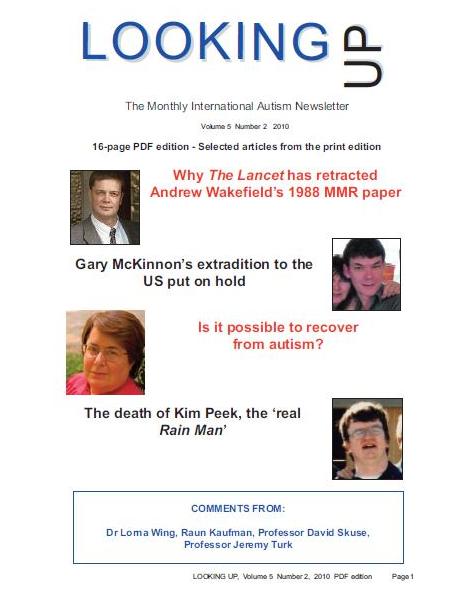
|
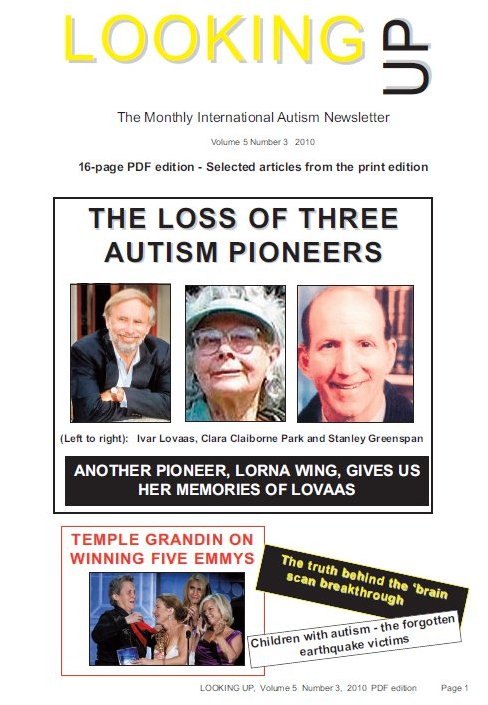
|
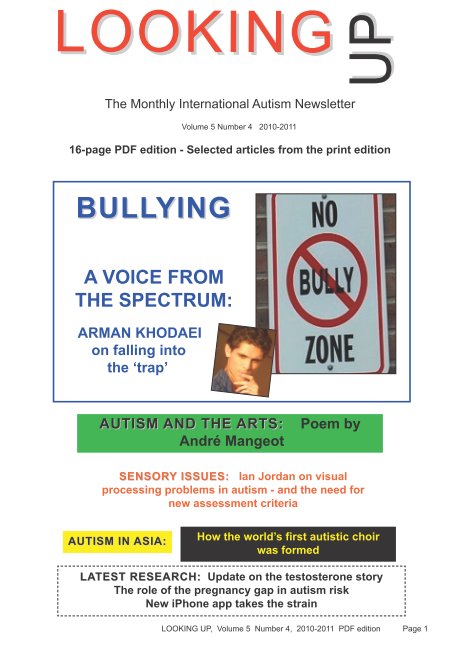
|
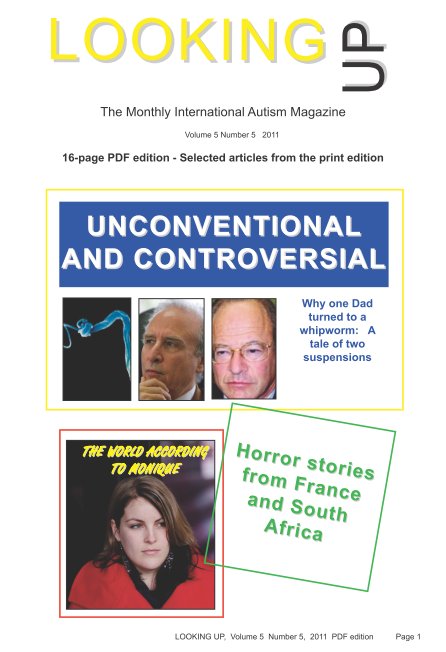
|
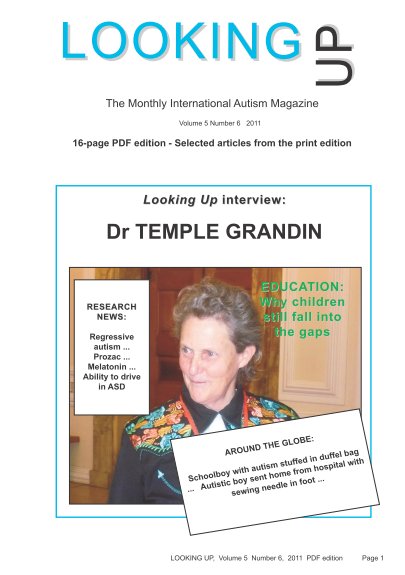
|
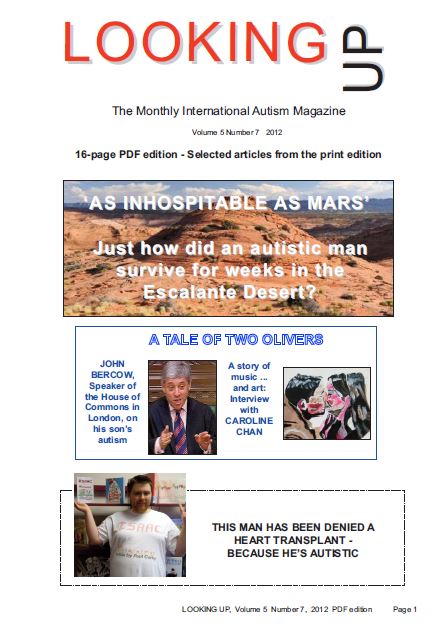
|
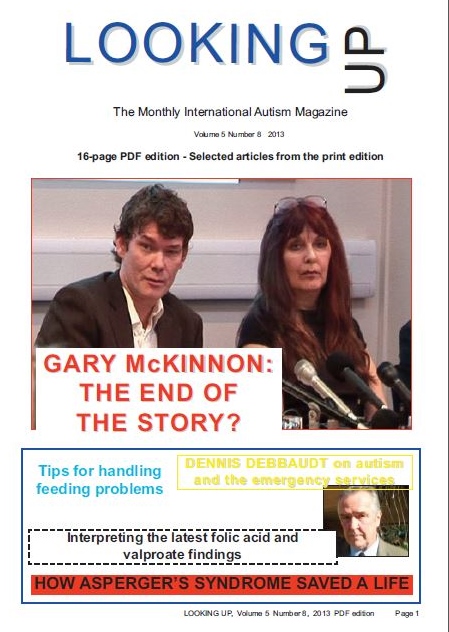
|
| Home page | Subscribe (print edition) | Selected articles | Our publications | Our mailing lists |
| PDF edition | Subscribe (PDF edition) | Back issue contents | Autism books | Contact us |
From Volume 5 Number 5 (Print edition only)
LOS ANGELES,
A new UCLA study is the first to reveal how the disorder makes its mark at the molecular level, resulting in an autistic brain that differs dramatically in structure from a healthy one.
The findings are published in the advance online edition of Nature in June 2011. In the study, researchers provide new insight into how genes and proteins go awry in autism to alter the mind.
The discovery also identifies a new line of attack for researchers, who currently face a vast array of potential fronts for tackling the neurological disease and identifying its diverse causes.
“If you randomly pick 20 people with autism, the cause of each person’s disease will be unique,” said the principal investigator, Dr Daniel Geschwind. “Yet when we examined how genes and proteins interact in autistic people’s brains, we saw well-defined shared patterns. This common thread could hold the key to pinpointing the disorder’s origins.”
The
research team, led by Dr Geschwind, included scientists from the
The researchers focused on gene expression -how a gene’s DNA sequence is copied into RNA, which directs the synthesis of cellular molecules called proteins. Each protein is assigned a specific task by the gene to perform in the cell.
By measuring gene-expression levels in the cerebral cortex, the team uncovered consistent differences in how genes in autistic and healthy brains encode information.
“We were surprised to see similar gene expression patterns in most of the autistic brains we studied,” said first author Dr Irina Voineagu, a UCLA post-doctoral fellow in neurology. “From a molecular perspective, half of these brains shared a common genetic signature. Given autism’s numerous causes, this was an unexpected and exciting finding.”
The researchers’ next step was to identify the common patterns. To do this, they looked at the cerebral cortex’s frontal lobe, which plays a role in judgment, creativity, emotions and speech, and at its temporal lobes, which regulate hearing, language and the processing and interpreting of sounds. When the scientists compared the frontal and temporal lobes in the healthy brains, they saw that more than 500 genes were expressed at different levels in the two regions.
In the autistic brains, these differences were virtually non-existent. “In a healthy brain, hundreds of genes behave differently from region to region, and the frontal and temporal lobes are easy to tell apart,” Dr Geschwind said. “We didn’t see this in the autistic brain. Instead, the frontal lobe closely resembles the temporal lobe. Most of the features that normally distinguish the two regions had disappeared.”
Two other clear-cut patterns emerged when the scientists compared the autistic and healthy brains. First, the autistic brain showed a drop in the levels of genes responsible for neuron function and communication. Second, the autistic brain displayed a jump in the levels of genes involved in immune function and inflammatory response.
“Several of the genes that cropped up in these shared patterns were previously linked to autism,” said Dr Geschwind. “By demonstrating that this pathology is passed from the genes to the RNA to the cellular proteins, we provide evidence that the common molecular changes in neuron function and communication are a cause, not an effect, of the disease.”
The next step will be for the research team to expand its search for the genetic and related causes of autism to other regions of the brain.

|

|

|

|

|

|

|

|
| Current 40-page print edition issue | |||||||||||||||
|---|---|---|---|---|---|---|---|---|---|---|---|---|---|---|---|
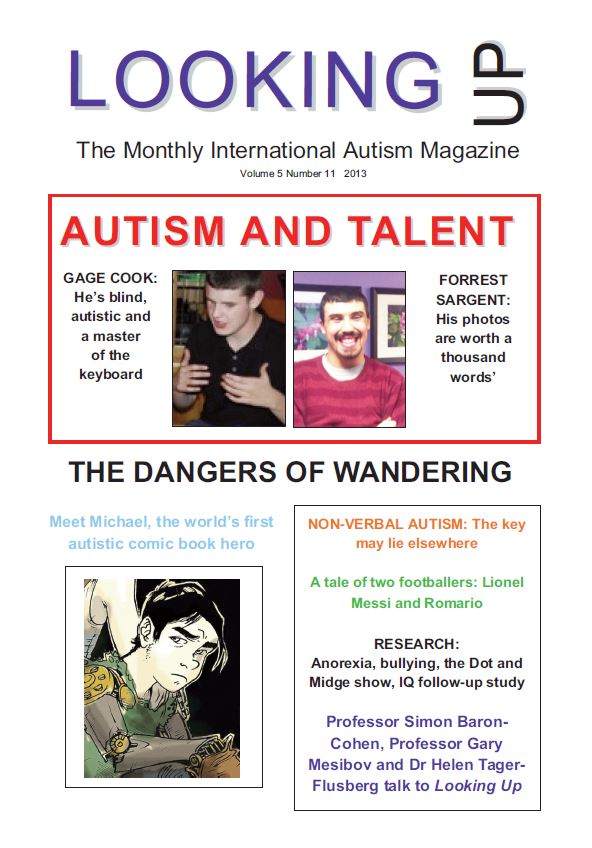
|
| ||||||||||||||
| PRINT EDITION BACK ISSUE CONTENTS AND FRONT COVERS | ||||||||||||||||||||||||||
|---|---|---|---|---|---|---|---|---|---|---|---|---|---|---|---|---|---|---|---|---|---|---|---|---|---|---|
| VOLUME 1, Number: | 1 | 2 | 3 | 4 | 5 | 6 | 7 | 8 | 9 | 10 | 11 | 12 | VOLUME 2, Number: | 1 | 2 | 3 | 4 | 5 | 6 | 7 | 8 | 9 | 10 | 11 | 12 | |
| VOLUME 3, Number: | 1 | 2 | 3 | 4 | 5 | 6 | 7 | 8 | 9 | 10 | 11 | 12 | VOLUME 4, Number: | 1 | 2 | 3 | 4 | 5 | 6 | 7 | 8 | 9 | 10 | 11 | 12 | |
| VOLUME 5, Number: | 1 | 2 | 3 | 4 | 5 | 6 | 7 | 8 | ||||||||||||||||||
| You can find our PDF EDITION CONTENTS AND COVERS on our PDF EDITION BACK ISSUES PAGE | ||||||||||||||||||||||||||
| Home page | Subscribe (print edition) | Selected articles | Our publications | Our mailing lists |
| PDF edition | Subscribe (PDF edition) | Back issue contents | Autism books | Contact us |